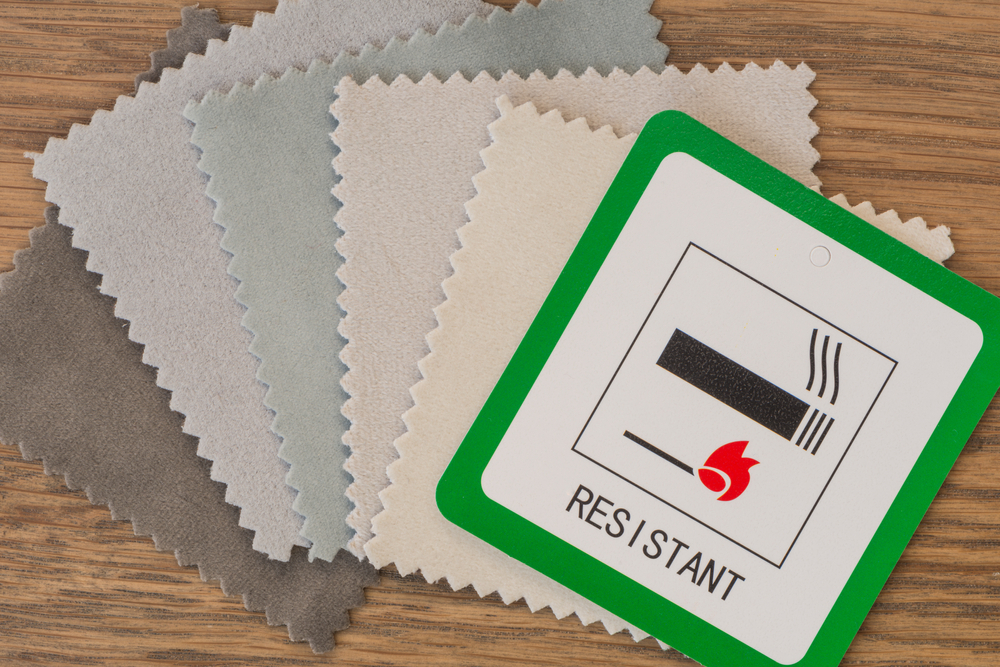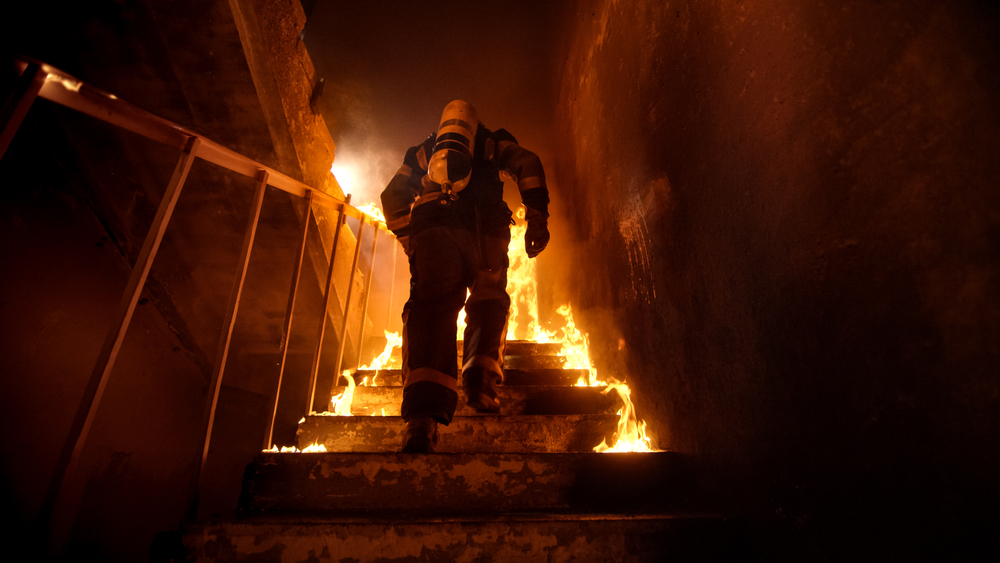|
Getting your Trinity Audio player ready...
|
People’s lifestyles have been revolutionized by fire retardant fabric. All buildings must use fire safe drapes and curtains to avoid hazardous situations. According to statistical research, around 50% of all fire incidents are linked to textiles.[1]
Investing in high-quality fire retardant clothing and carefully examining ratings and regulations will assist professionals in remaining safe while completing even the most hazardous duties.
What Fabric is Fire Resistant?
Fabrics resistant to catching fire or melting when confronted with flames or other ignition sources are considered flame resistant. Although no cloth is entirely flame retardant, some fabrics resist fire better than others. Fabric is labeled as fire-resistant or retardant material based on the time it takes to catch fire.

Suggested Read: Fire Resistant Clothing Intro & Importance
There has never been a realistic chance that a waterproof fiber and fire safety can exist. Well, China’s scientists have developed a cotton treatment that renders it flame retardant and waterproof.[2]
Fire retardant material includes synthetic fabrics such as:
- Nomex
- Kevlar
- Modacrylic
What Fabric Is Least Flammable?
Wool is the most flame-resistant natural fabric, as it is difficult to ignite and often extinguish fires within its fibers.
Natural fibers, such as silk, cotton, and wool, are more prone to burning than artificial fibers. However, fabric production techniques can increase fire resistance by combining them with different chemicals.
What Is The Most Heat Resistant Fabric?
There is a wide variety of fire resistant fabrics, each with unique qualities that make them suitable for various purposes.
Coated fabrics are a typical type of fire retarded material deployed in a variety of industries. These materials are frequently used for protection because they resist heat.
The most common types of coatings are:
- Neoprene
- Silicone
- Ceramic
- Refractory
These coatings are desirable because they also resist abrasion, chemicals, and ultraviolet light. They are also incredibly resilient, allowing them to be used in harsh conditions.
Another type of heat-resistant fabric includes silica fabric and textiles. They are ideal thermal barriers due to their poor thermal conductivity. In severe conditions, refractory coatings give excellent temperature resistance.
They are among the most rigid industrial textile materials in the world due to their outstanding resistance to various chemicals, low porosity, exceptional abrasion resistance, and overall high strength.
What Fabrics Are Most Flammable?
All textiles can catch fire, yet their characteristics differ considerably. Cotton is the most combustible fabric material. Silk and linen burn nearly as quickly and swiftly as cotton.
Did you know that you should never wear acrylic apparel near a bonfire?
The composition of the substance influences how it burns. Thin, lightweight, highly breathable fabrics catch fire and burn rapidly. Surfaces that are fuzzy, rough, or porous are more combustible than those that are smooth and impervious.
How To Make Fabric Fire Resistant?
A flame retardant solution prevents materials from igniting when exposed to low-energy ignition sources, such as a cigarette lighter. To produce fire retardant fabric, textile companies add specific chemical components.
There are two common types of fire retardant fabric material treatments:
- Coating method: fire-resistant back-coating is applied to the fabric in question. This makes the fabric more suitable for upholstery by stiffening it. As a result of the coating process, the hang of the fabric is less natural than other fabric treatments, making it less ideal for use as the curtain fabric.
- Chemical dipping is another frequent fire-retardant technique, typically used in fabric composed of natural fibers (or with a high percentage of natural fibers). The fabric is immersed in a chemical solution, which dissolves into the fibers and forms a barrier between the fiber and the flame.
Is Polyester Fabric Fire Retardant?
Yes, polyester fabric is fire retardant and is the most popular fire retardant fabric. While most natural fibers are combustible, plastic-based fibers frequently melt in response to heat rather than igniting. Due to their high melting points and low thermal conductivity, nylon and polyester fabrics have also become incredibly popular.
Some polyester fabrics are considered permanently flame retardant. This is because the flame retardant characteristics are included directly in the molecular structure of the fibers used to create the garments.
How To Clean Fire Retardant Fabric?
Regular washing will extend the life of your clothing so that it can continue to keep you safe. Before washing fire retardant fabric, it is essential to understand how to do so effectively. Clothes that are fire safe cannot be laundered in the same manner as regular clothing.

Also Read: How To Clean Hi-Vis Clothing Properly
How to clean flame Retardant Fabric:
- Use the standard or cotton wash cycle. Most fire retardant fabric is typically cleaned at 140 degrees with standard washing detergent.
- Flip your garments inside out. This will aid in maintaining their fire resistance.
- Separately launder fire retardant material clothes from other garments. Failure to do so may damage the fire retardant treatment or the high visibility components of the apparel.
- Avoid using bleach, vinegar, and other additives. Over time, bleach will degrade the molecular link between the cloth and fire retardant treatment, lowering its flame resistance.
- Avoid using fabric softeners, starch, or any additives. A fabric softener can diminish a fabric’s flame resistance by concealing it, which is also flammable.
- Hard water is highly detrimental to fire retardant clothes because it can deposit magnesium and calcium into tiny packets. These are combustible.
- Use neither starch nor detergents containing animal fats. Starch functions as a fuel, but animal fats are combustible. If your fire retardant clothing is dry-cleaned, you must ensure that no starch is used.
Conclusion
Using flame resistant materials on a property can provide an additional layer of safety. They can reduce the danger of fire and injury. Now that you understand what flame-resistant materials are, be careful to get them from a reputable vendor like Garment Printing.
Send us a note if you require flame resistant clothing for schools, hospitals, or hotels in Australia. Garment Printing is a one-stop shop for products and services. We have a wide selection of apparel and merchandise that can be delivered anywhere in Australia. We also create custom orders so that you receive precisely what you require. Contact us immediately for more information on our service.
Image Source: Shutterstock
Also Read:
- A Complete Buyer’s Guide for Hi Vis Jacket
- Workwear Fabric & Material
- Selection of Hard Hats For Safety At Work
References
[1] “Flame Retardant Regenerated Cellulose Fibers” – RI.SE
[2] “Self-Cleaning Flame Resistant Cotton Coating” – Phys.org
-

Meet Lisa John, a dynamic Content Manager and Marketing Professional at Garment Printing Group. With three years of industry experience, Lisa excels in crafting compelling narratives that not only illuminate the vibrant world of garment printing but also drive engagement and growth.
View all posts




